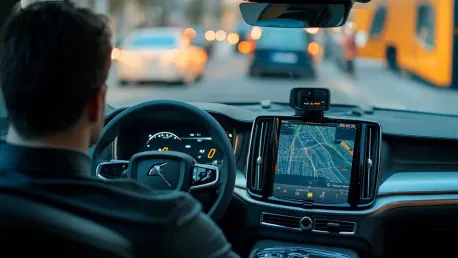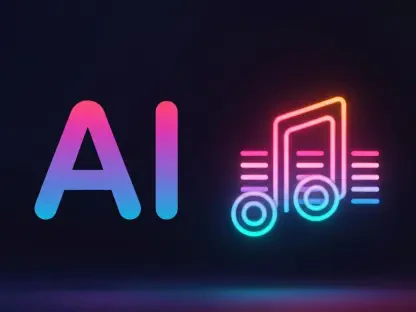The automotive industry is amidst a remarkable transformation driven by advances in automotive software. Technological innovations such as 5G, AI, and the rise of connected vehicles are redefining the landscape, emphasizing the critical role software plays in enhancing vehicle functionality, safety, and user experience. This convergence of cutting-edge technology with modern vehicular design signifies a paradigm shift where software stands at the forefront of automotive evolution. As the demand for smarter, safer, and more efficient vehicles increases, the role of software in modern vehicles cannot be overstated.
Rise of Connected Vehicles
Connected vehicles represent a pivotal change within the automotive sector. These vehicles, equipped with various electronic components, demand state-of-the-art software to manage complex applications. Today, electronic components make up approximately 40% of a vehicle’s parts, and this figure is expected to rise above 60% in the coming decades. This increasing reliance on electronic components significantly amplifies the demand for sophisticated software solutions. The ongoing surge in connected vehicles opens up attractive revenue opportunities throughout the entire connected car ecosystem. The ability to integrate and manage data from numerous sensors, cameras, and control systems makes connected vehicles more than just modes of transport—they become smart devices on wheels.
Manufacturers are continually exploring ways to enhance connectivity features, such as real-time traffic updates, remote vehicle diagnostics, and over-the-air (OTA) software updates. These advancements not only improve the driving experience but also ensure that vehicles remain updated with the latest safety and performance features. The integration of Vehicle-to-Everything (V2X) communication technology further exemplifies the reach of connected vehicles, enabling interactions with other vehicles, infrastructure, and networks. By doing so, connected vehicles contribute to a safer and more efficient road environment. As these technologies evolve, the automotive landscape is increasingly characterized by a seamless connection between vehicles and their external environment.
Push for Autonomous Driving Technologies
The pursuit of fully autonomous vehicles has created an intense demand for advanced automotive software. Autonomous driving technologies require robust software capable of environmental perception, decision-making, and control mechanisms. Development efforts are intensifying to produce software that ensures safe and efficient autonomous driving. As a result, software has become an indispensable element in achieving self-driving capabilities, marking a revolutionary shift in how vehicles operate. Companies investing in autonomous technology must develop algorithms capable of processing vast amounts of data in real-time to interpret surrounding conditions and make split-second decisions.
This transformation is further driven by advancements in machine learning and artificial intelligence (AI). These technologies enable vehicles to learn from vast datasets, improving their decision-making capabilities over time. The journey towards autonomy involves overcoming challenges such as sophisticated sensor fusion, accurate mapping, and fail-safe redundancies. Each level of progression towards full autonomy brings with it heightened expectations for software reliability and performance. As the industry edges closer to realizing fully autonomous vehicles, it becomes increasingly clear that software will be the cornerstone of this technological leap, underpinning every function from navigation to safety protocols.
Powertrain Electrification
The shift to electric vehicles (EVs) underscores the need for specialized software to manage battery lifecycle, flexibility, and efficient charging processes. As the global preference for EVs grows, the automotive software market is expanding to meet these specific needs. Software innovations in powertrain electrification contribute to a cleaner and more sustainable future, playing a crucial role in the successful adoption and functioning of EVs. These software solutions monitor battery health, optimize energy usage, and enhance vehicle performance, thereby extending the longevity and efficiency of EVs’ powertrain systems.
Additionally, the integration of advanced software enables vehicles to effectively manage regenerative braking, thermal management, and energy recovery processes. These capabilities are crucial for maximizing the range and performance of EVs, addressing concerns over range anxiety and charging duration. Furthermore, software development in this sphere aims to create seamless charging experiences through smart grids and IoT integration, allowing vehicles to communicate with charging infrastructure for optimized energy distribution and reduced downtime. As electric mobility continues to gain momentum, the synergy between hardware and software will be pivotal in advancing EV technology and making sustainable transportation a reality for the masses.
Enhanced Consumer Experiences
Modern consumers expect seamless integration of their vehicles with their digital lifestyles. This demand extends to advanced infotainment systems, personalized navigation, and intuitive human-machine interfaces (HMIs). To satisfy these advanced user experiences, innovative automotive software solutions are critical. The evolving consumer preferences drive the need for continuous improvements in automotive design and technology. In-car infotainment systems have become a focal point of this transformation, providing drivers and passengers with a suite of features such as media streaming, voice-activated controls, and real-time navigation updates.
Moreover, personalized user profiles and adaptive learning capabilities tailor the driving experience to individual preferences, enhancing comfort and satisfaction. The integration of virtual assistants and smart home connectivity further blurs the line between personal technology and automotive functionality, turning vehicles into extensions of consumers’ digital ecosystems. Manufacturers are leveraging advancements in augmented reality (AR) and virtual reality (VR) to create immersive experiences, from enhanced head-up displays to interactive user manuals. As consumer expectations evolve, the demand for cutting-edge software that can deliver these enhanced experiences continues to grow, driving innovation and adoption across the industry.
Tackling Software Complexity
The increasing complexity of vehicle platforms poses significant development challenges. Creating expansive codebases and intricate software architectures necessitates rigorous testing and validation processes. Manufacturers must navigate these complexities to deliver reliable and efficient software. This challenge is a testament to the pivotal role that well-developed software plays in modern vehicle functionality. As vehicle systems become more interconnected, ensuring the seamless integration of diverse software components is paramount to maintaining system reliability and performance.
Developers employ agile methodologies and continuous integration/continuous deployment (CI/CD) pipelines to streamline the development process and address potential issues swiftly. Simultaneously, advanced simulation and testing environments are utilized to validate software functionalities under various scenarios, ensuring that the final product adheres to stringent safety and performance standards. The collaborative nature of modern software development emphasizes the importance of cross-disciplinary expertise, blending knowledge from fields such as computer science, electrical engineering, and automotive design. Overcoming these challenges requires a holistic approach, combining innovation and rigor to create software capable of meeting the demands of today’s complex vehicular platforms.
Addressing Cybersecurity Concerns
With the proliferation of connected vehicles, cybersecurity has become a paramount concern. Ensuring that vehicles are protected from cyber threats is essential to maintaining the integrity and safety of both the vehicle and its passengers. Robust cybersecurity measures are imperative to safeguard against potential vulnerabilities in the automotive software realm, fostering a secure environment for modern vehicles. The increasing connectivity and integration of digital systems in vehicles expose them to a wide array of cyber threats, including data breaches, ransomware attacks, and unauthorized access to critical systems.
Automotive companies implement multi-layered security strategies, incorporating encryption, intrusion detection systems, and regular software updates to mitigate these risks. Collaboration between automakers, cybersecurity experts, and regulatory bodies is crucial in developing standardized protocols and best practices for automotive cybersecurity. Additionally, the rise of vehicle-to-everything (V2X) communication necessitates stringent security measures to prevent malicious interference in connected ecosystems. By prioritizing cybersecurity, manufacturers can ensure that advancements in automotive technology do not come at the expense of safety and trust, protecting both the drivers and the integrity of the vehicle systems.
Regional Dynamics
The automotive industry is experiencing an extraordinary transformation, largely driven by advancements in automotive software. Innovations like 5G technology, artificial intelligence, and the proliferation of connected vehicles are reshaping the industry, highlighting the essential role of software in enhancing vehicle capabilities, safety, and overall user experience. The fusion of state-of-the-art technology with contemporary car design marks a significant shift, propelling software to the forefront of automotive evolution.
Today’s vehicles are becoming smarter, safer, and more efficient, thanks to these technological breakthroughs. As consumer demand for high-tech, reliable, and eco-friendly automobiles grows, the importance of software in modern cars cannot be emphasized enough. From navigation systems to autonomous driving features, software is central to the functioning of today’s vehicles. This trend indicates that the future of the automotive industry will be heavily influenced by ongoing digital innovations and the pivotal role of software in creating next-generation vehicles.









